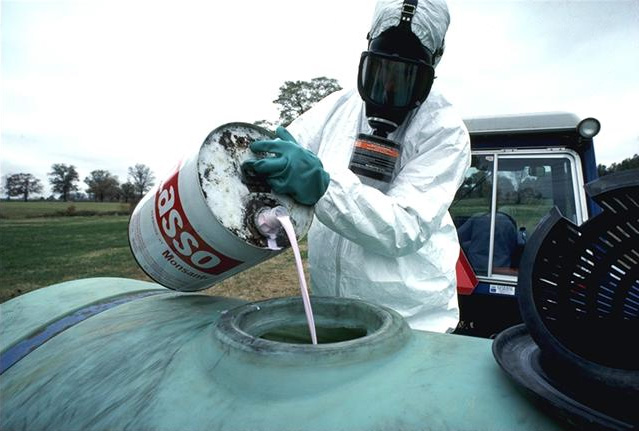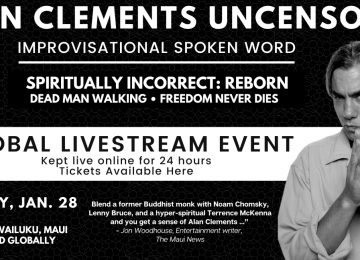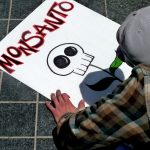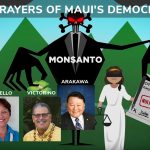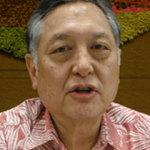The Dutch are among the greatest and wisest farmers on earth. For centuries, farmers of one of the planet’s most densely populated nations have led the world of agriculture by innovating techniques to increase yields. The National Geographic recently reported that the Netherlands is, “the globe’s number two exporter of food as measured by value, second only to the United States, which has 270 times its landmass. More than a third of all global trade in vegetable seeds originates in the Netherlands. Dutch firms are among the world leaders in the seed business, with close to $1.7 billion worth of exports in 2016. Yet they market no GMO products.”
It is no great mystery why this is. The myth that GMO crops and the chemical agriculture that always accompanies it are “needed to feed the world” is one of the greatest corporate con jobs in modern history.
This con job has been facilitated by the agrichemical industry’s investment of countless hundreds of millions of dollars to support a propaganda campaign of advertising, media arm-twisting, campaign donations, and the wholesale purchase of agriculture schools and scientists.
Climate denier Dr. Sterling Burnett expressed the agrochemical industry’s narrative succinctly in a 2015 Forbes article in which he wrote, “Only the widespread embrace of bioengineered or genetically modified crops and animals can solve the persistent problem of hunger and lessen the impact of pest-borne diseases without doing untold damage to the environment.”
Luminaries like Bill Gates and Bill Clinton agree.
At the G8 summit in 2000, President Bill Clinton chastised governments skeptical of GMO crops. “If we could get more of this golden rice, which is a genetically modified strain of rice, especially rich in Vitamin A, out to the developing world, it could save 40,000 lives a day, people that are malnourished and dying,” Clinton declared.
And Bill Gates enthused in The Verge: “GMO-derived seeds will provide far better productivity, better drought tolerance, salinity tolerance, and if the safety is proven, then the African countries will be among the biggest beneficiaries.”
In stark contrast, as National Geographic points out, the enterprising Dutch have created a remarkable, national model of sustainable agriculture that avoids GMOs entirely. While a new GMO seed variety can cost $100 million to develop the Dutch rely on “the venerable science of molecular breeding – which introduces no foreign genes – can deliver remarkable gains with development costs as low as $100,000.”
In the same article, Dutch scientist Ernst van den Ende of Wageningen University, exploded the rationale for GMO crops in underdeveloped nations. “Water isn’t the fundamental problem. It’s poor soil,” he says. “The absence of nutrients can be offset by cultivating plants that act in symbiosis with certain bacteria to produce their own fertilizer.” The soaring cost of grain to feed animals? “Feed them grasshoppers instead,” he says. One hectare of land yields one metric ton of soy protein, a common livestock feed, a year. The same amount of land can produce 150 tons of insect protein.”
Most European nations like the Netherlands have rejected GMO crops. Their concerns were validated in a 2016 New York Times report, “Broken Promises of Genetically Modified Crops,” that slammed GMOs as the food boon for the future concluding, “genetic modification in the United States and Canada has not accelerated increases in crop yields or led to an overall reduction in the use of chemical pesticides.”
‘Worrying about starving future generations won’t feed them. Food biotechnology will.’ – Monsanto advertisement
Environmental activist George Manbiot exlored the myth of GMO as the world saver in his “Seeds of Distraction” expose. “The world has a surplus of food, but still people go hungry,” he wrote. “They go hungry because they cannot afford to buy it. They cannot afford to buy it because the sources of wealth and the means of production have been captured and in some cases monopolized by landowners and corporations. The purpose of the biotech industry is to capture and monopolize the sources of wealth and the means of production. The biotech companies are not interested in whether people are starving. They simply want to make money.”
Biotechnology is one of tomorrow’s tools in our hands today. Slowing its acceptance is a luxury our hungry world cannot afford.’ – Monsanto advertisement
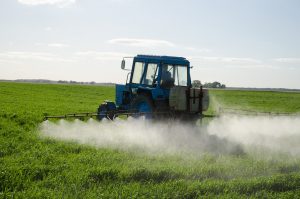
At a biotech industry conference in 1999, Monsanto executives described a future where 100% of all commercial seeds would be genetically modified and patented. From that time Monsanto has promoted the myth that GMOs are essential to feed the world. By 2008 Monsanto was spending more than $2 million a day in research to identify, test, and develop new seeds and technologies. The company typically spends more than $4 million annually on lobbying in the US.
The collusion between agro-chemical companies and scientists in promoting GMO crops as the world’s panacea includes the case of Harvard Professor Calestous Juma, who was directed by a Monsanto executive to write a paper – “Global Risks of Rejecting Agricultural Biotechnology” – about how GMOs are needed to feed Africa.
The Boston Globe revealed: “Monsanto not only suggested the topic to Professor Calestous Juma. It went so far as to provide a summary of what the paper could say and a suggested headline. The company then connected the professor with a marketing company to pump it out over the Internet as part of Monsanto’s strategy to win over the public and lawmakers.”
The New York Times exposed GMO advocate Dr. Kevin Folta (chairman of the horticultural sciences department at the University of Florida) by publishing emails from the scientist to Monsanto reps and the Ketchum PR firm, emails which were revealed by the US Right-to-Know campaign. Ketchum employees repeatedly asked Folta to respond to common questions posed by biotechnology critics, and they even drafted answers for him. The documents also show that Monsanto paid for Folta’s travel to speak to students, farmers, politicians and the media. “I’m glad to sign on to whatever you like, or write whatever you like,” and “I promise a solid return on investment,” Folta wrote in 2014 emails to a Monsanto executive. Folta has sued The Times for defamation.
Another advocate, Dr. David Zilberman, of the University of California, who campaigned against California’s GMO labeling proposition and claims, “GMO has already made a significant positive contribution to human well-being,” served on a Monsanto scientific advisory board in 2012.
Those questioning the validity of GMOs are often pilloried in the press. “A long-standing campaign of misinformation from some environmental activists has severely misled concerned consumers,” New York magazine. “The war against genetically modified organisms is full of fear mongering, errors, and fraud,” by, “an army of quacks and pseudo-environmentalists waging a leftist war on science,” Slate.
Scientists, politicians, journalists, and some business leaders have all promoted the GMO myth. The Bill & Melinda Gates Foundation launched the pro-GMO lobby Cornell Alliance for Science at Cornell University in 2014 with a $5.6 million grant, with a goal – to “depolarize the charged debate” about GMOs. The Alliance posts absurd statements like: “You are more likely to be hit by an asteroid than be hurt by GE food – and that’s not an exaggeration.”
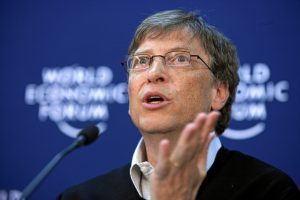
Critiquing the Alliance’s mission, Tufts University Professor Timothy Wise declared: “The Gates Foundation is paying biotech scientists and advocates at Cornell to help them convince the ignorant and brainwashed public, who ‘may not be well informed,’ that they are ignorant and brainwashed.”
While Gates champions his foundation as helping the world’s poor, a 2016 report by Global Justice Now suggested Gates Foundation spending, especially on agricultural projects, exacerbates inequality and entrenches corporate power globally. The head of the foundation’s Agricultural Research and Development department, Dr. Rob Horsch, spent decades at Monsanto.
The Gates Foundation, Dow Chemical, and Monsanto were all major donors to the Clinton Foundation. In 2014, Hillary Clinton received a $335,000 “speaking fee” for giving the keynote address to one of Monsanto’s main GMO lobbying front groups, Biotechnology International Organization. She suggested, “‘Genetically modified’ sounds Frankensteinish. ‘Drought-resistant’ sounds like something you’d want.”
The Biotechnology International Organization had previously paid former President Bill Clinton $175,000 for a speech in 2010, while Hillary Clinton was Secretary of State.
At the State Department, Clinton sought to promote the biotech industry abroad by promoting their world-wide agenda. “Agricultural biotechnology has great potential to help address the challenges of food insecurity and mitigate climate change,” Clinton wrote in a cable to diplomats revealed by Wikileaks. “Agricultural biotechnology can help address the food crisis and serve as a development tool by increasing food productivity, reducing crop input costs, and helping to alleviate poverty.”
Monsanto’s influence even extends into the judicial system and the U.S. Supreme Court, where Justice Clarence Thomas, a corporate lawyer for Monsanto in the 1970s, has participated in several cases involving his previous employer. In none of these cases did he follow judicial codes of conduct and recuse himself.
In the UK, former Environment Secretary Owen Paterson, advocates for GMOs while attacking opponents. “They call themselves humanitarians and environmentalists, but their policies would condemn billions to hunger, poverty and underdevelopment,” he fumed at a speech in South Africa.
Following release of Neil Young’s CD “The Monsanto Years,” Paterson condemned the legendary musician in an opinion piece for the New York Post, titled “How Neil Young, Greenpeace work to starve the world’s poor.”
The British politician has also pushed the Golden Rice “save the world” agenda. “Every attempt to deploy Golden Rice has been thwarted and in that time seven million children have gone blind or died,” he erroneously suggested in 2013. “It’s just disgusting that little children are allowed to go blind and die because of a hang-up by a small number of people about this technology,” he said. “I think what they do is absolutely wicked.”
In 2014, GMO proponent/Nobel Laureate Sir Richard Roberts (chief scientific officer for New England Biolabs), led a group of more than 100 fellow Nobel Laureates to urge Greenpeace to end its opposition to Golden Rice. “How many children must suffer before this anti-GMO propaganda is called out for being what it is – a crime against humanity,” Roberts wrote in an editorial.
Roberts and his ill-informed Nobel cohorts were obviously unaware of a research study from Washington University in St Louis that indicated Golden Rice hasn’t come to market because, after more than two decades of expensive research, it basically does not work, alternative approaches to supplying vitamin A to children are working, and actions of campaigners have had no impact on its failure to reach the commercial market.
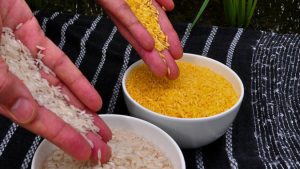
“Golden Rice is still not ready for the market, but we find little support for the common claim that environmental activists are responsible for stalling its introduction,” said lead author Glenn Stone, professor of anthropology and environmental studies, Washington University. “The rice simply has not been successful in test plots of the rice breeding institutes in the Philippines, where the leading research is being done.”
Stone also reported it is still unknown if the beta carotene in Golden Rice can even be converted to Vitamin A in the bodies of badly undernourished children. In contrast, the Philippines has managed to slash the incidence of Vitamin A deficiency by non-GMO methods, Stone pointed out.
A report by the Institute of Science in Society asserted: “To offer the poor and malnourished a high-tech ‘golden rice’ tied up in multiple patents, that has cost $100 million to produce and may cost as much to develop, is worse than telling them to eat cake.”
Among the other GMO failures in the third world, Monsanto-trained Kenyan scientist Dr. Florence Wambugu has unsuccessfully promoted a GMO sweet potato. “In Africa GM food could almost literally weed out poverty,” Wambugu told New Scientist. “Africa must enthusiastically join the biotechnology revolution,” she wrote in the journal Nature.
Wambugu worked with Monsanto’s Rob Horsch to develop a GMO sweet potato in Kenya. They failed to produce a virus resistant strain. “There is no demonstrated advantage arising from genetic transformation using the initial gene construct,” disclosed a report by researchers, Dr Francis Nang’ayo, and Dr Ben Odhiambo. “All lines tested were susceptible to viral attacks.”
Also in Kenya, an attempt to commercialize publicly developed Bt technology in open-pollinated seed (which can produce a viable crop year after year) by a charitable project called Insect Resistant Maize for Africa, funded by the Syngenta Foundation, failed after 10 years.
South Africa is the only country in the world where their staple food crops – corn and wheat – are genetically modified. “The majority of South Africans are not only eating GM maize without their knowledge and consent, but have no choice or alternative whatsoever even if the products were correctly labeled,” announced Mariam Mayet, Director of the African Centre for Biosafety. “This is totally undemocratic and unacceptable. It smacks of outright food fascism.”
Monsanto’s Bt MON810 corn failed in South Africa, the result of massive insect resistance to the Cry1ab toxin, and was withdrawn in 2013. It’s been replaced by MON8903. A recent peer-reviewed study revealed that the African maize stem borer has an inherently low susceptibility to Bt toxin.
Although MON810 maize failed in South Africa, it is now being tested in Kenya and Uganda. Monsanto is also attempting to grow GMO maize and cotton in Nigeria, while Burkina Faso’s attempts to grow GMO cotton have failed.
In Egypt, MON810 was genetically engineered into a local Egyptian maize variety called Ajeeb, patented by Monsanto. Independent Egyptian researchers from the Universities of Alexandria and Suez Canal have published three peer reviewed studies on Ajeeb maize that have found: Bt maize showed significant differences when compared to its conventional counterpart and may be toxic to the human food and animal feed; and several changes were noted in the organs, body weight and serum biochemistry in rats fed on GM maize.
As the agro-chemical giants try to push their GMO seeds on third world nations, the Environmental Working Group reported in 2014 that African traditional crop breeding has resulted in much higher yields than GMO counterparts. The Drought Tolerant Maize for Africa Project found conventionally bred varieties of crops had up to 30% better yields than those that were genetically engineered.

Daimoniz Miondo growing non-GMO corn in Malawi
And the toxic pesticides produced by companies like Monsanto and Syngenta are not required to feed a fast-growing global population, according to a 2017 United Nations report. The report, presented to the UN human rights council, criticized global corporations that manufacture pesticides, accusing them of the “systematic denial of harms”, “aggressive, unethical marketing tactics” and heavy lobbying of governments which has “obstructed reforms and paralyzed global pesticide restrictions.”
“Using more pesticides is nothing to do with getting rid of hunger,” said United Nations special rapporteur Professor Hilal Elver. “The corporations are not dealing with world hunger, they are dealing with more agricultural activity on large scales.”
A 2013 report by the African Centre for Biosafety on how African nations had been bullied into growing Monsanto’s defective Bt maize concluded: “GMOs do not, in reality, contribute to fighting global hunger. It is time for African governments to take cognizance of the recommendations of many international reports that support agro-ecological farming methods and distance themselves from privately owned industrial agriculture.”
Kenyan farmer Esther Bett summed up the GMO myth of saving the world in an interview with the Alliance for Food Sovereignty in Africa. “It seems that farmers in America can only make a living from GM crops if they have big farms, covering hundreds of hectares, and lots of machinery. But we can feed hundreds of families off the same area of land using our own seed and techniques, and many different crops. Our model is clearly more efficient and productive.”


